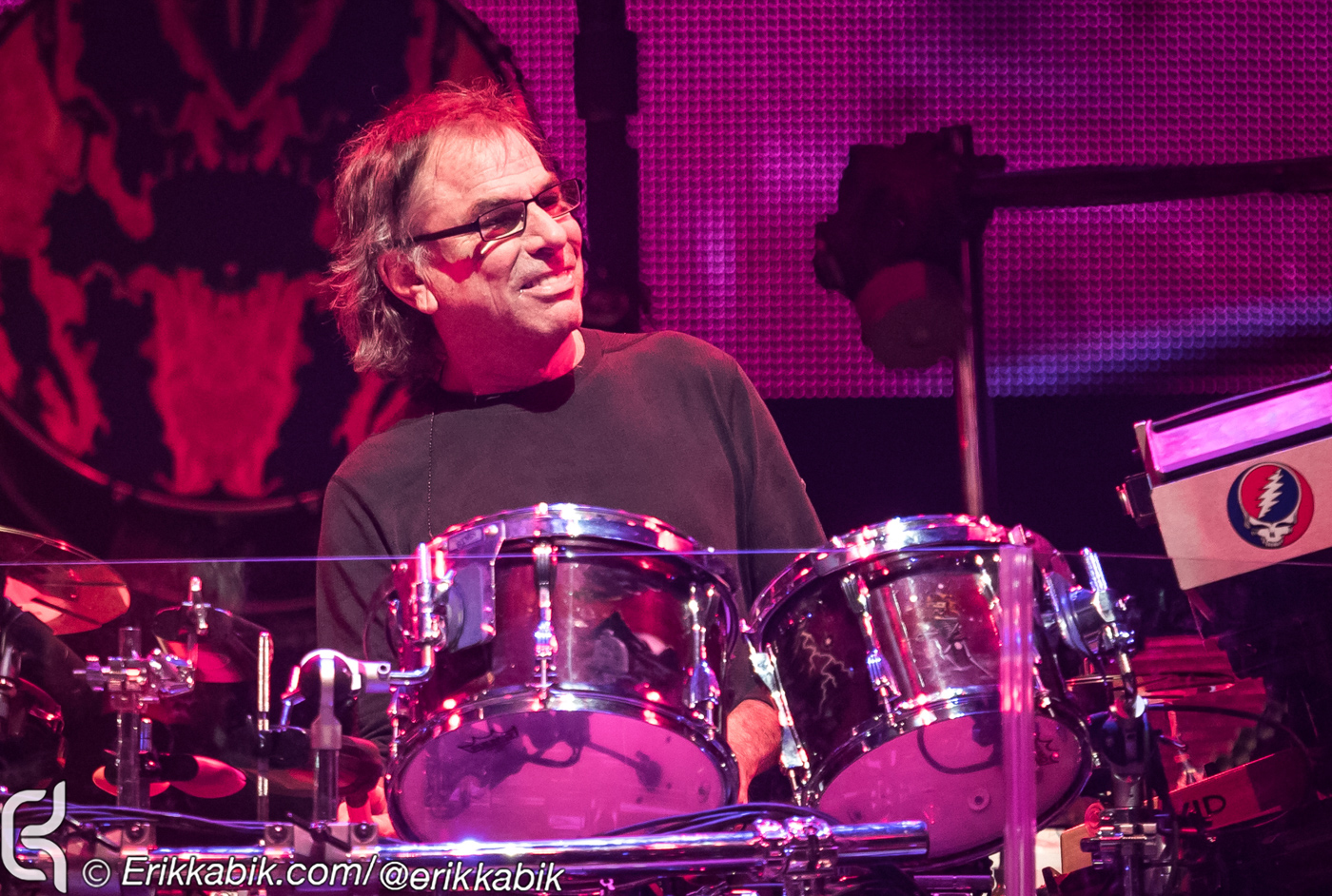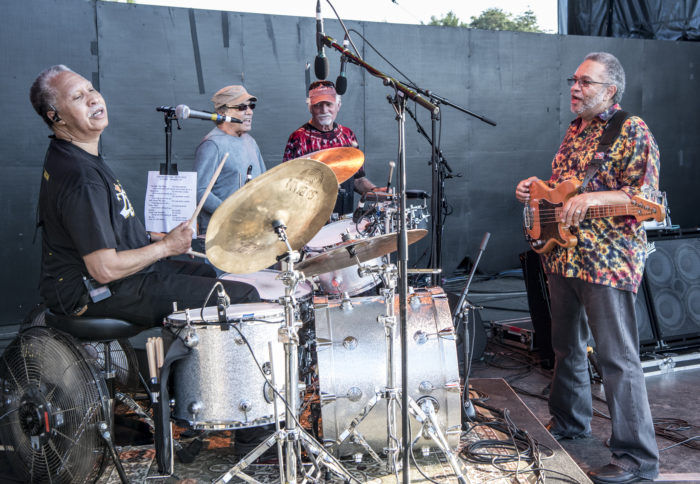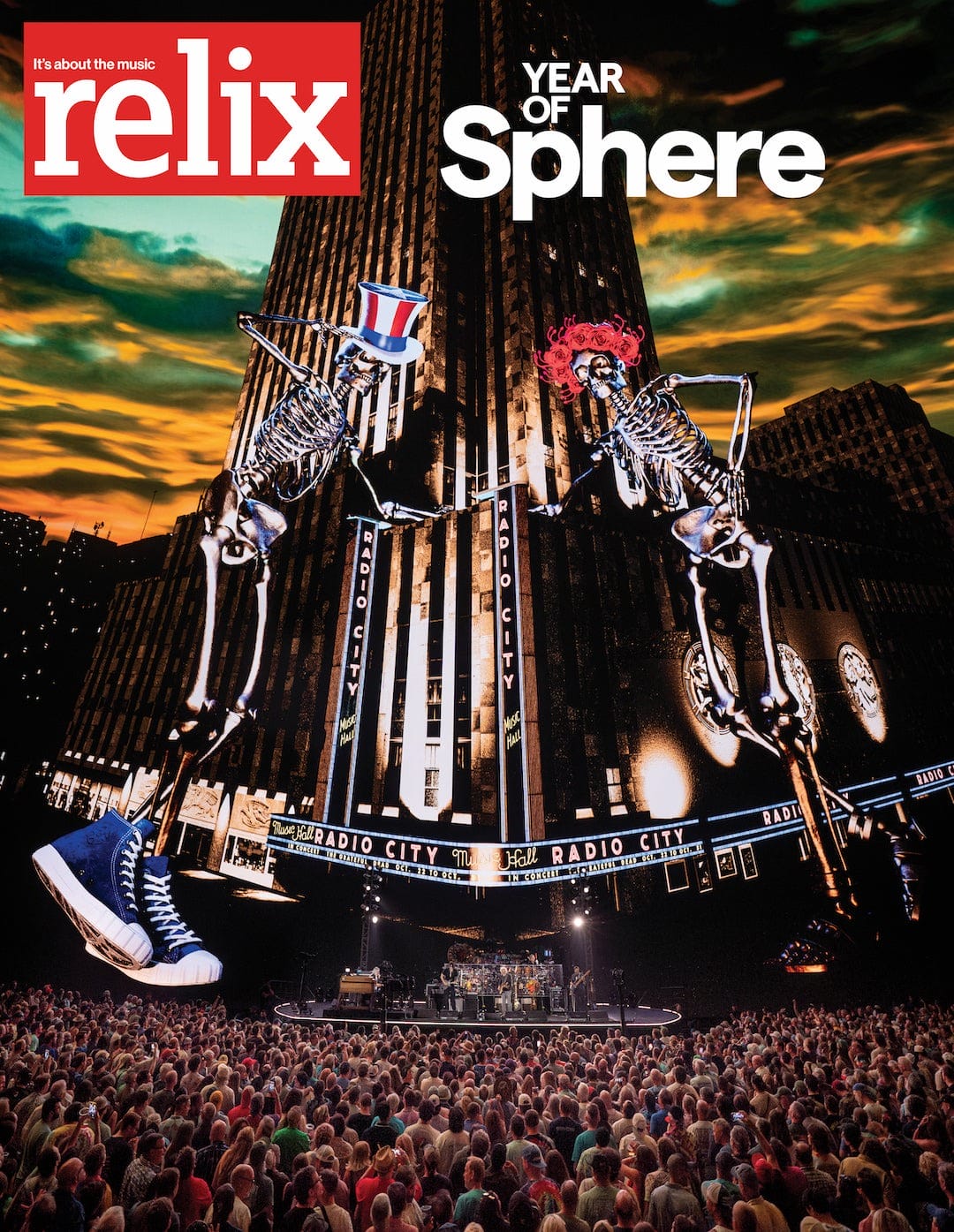50 Years of Jazz Fest: Mickey Hart’s Ghosts of Congo Square

Mickey Hart reflects on New Orleans’ key role in the development of American music.
This article is part of our 50 Years of Jazz Fest celebration and appears in the special Collector’s Edition April/May 2019 issue of Relix. Subscribe here using code NOLA50 and get 20% off.
“Congo Square deserves to be recognized,” Mickey Hart asserts. “It is sacred ground, and we need to recognize its importance. American-based music emerged from the culture that inhabited Congo Square in the 1800s. Most people have no idea what has happened there, but we should never forget. We need to take care of it.”
Among his many passions, the Grateful Dead drummer has maintained a focus on the history and mythology of music, which he has explored in books such as Planet Drum: A Celebration of Percussion and Rhythm, Drumming at the Edge of Magic, Spirit Into Sound: The Magic of Music and Songcatchers: In Search of the World’s Music.
As Hart looks back on his development as a musician and a musicologist, he explains that, while he was drawn to the drums from an early age, his scholarly exploration of the instrument didn’t manifest itself until years later. “At first, I had no idea about any of this,” he says. “It reached out to me—the ghosts of Congo Square grabbed me around the neck and wouldn’t let me go. All I was doing was dancing and listening to Tito Puente, Machito, Tito Rodríguez and all the great Latin bands that were coming out of New York in the ‘30s, ‘40s, ‘50s. These rhythms hit the city street, and they transformed into dance music, into what we know as Latin music now. That’s how music works—you usually base your knowledge on the body of work that preceded you, and you practice it and learn it, and then you make your own music with it, eventually. That’s what happened to the Grateful Dead, and that’s what happened to me.
“When I started writing my books Drumming at the Edge of Magic and Planet Drum, back in the ‘70s and ‘80s,” he continues, “that was when I did all the research to find out what the history was to what I was doing. Why was I practicing 12-15 hours a day? I had no idea. I was putting myself into a trance but I didn’t know anything about all that stuff back then. It took about 12 years of research to write Drumming at the Edge of Magic, tracing why we drum, what rhythm is all about and the history of it—the brotherhood and the sisterhood. Where did it come from? Why am I drumming until I collapse? Why do I do these things to play music? Why do we play in the driving rain? What’s it all about? And then I discovered these rhythm cultures, which are some of the most powerful cultures on the planet. So, it was just in the ether; it was in the air. I was totally into big-band music. So, you bring your influences forward into whatever you do, and you change it and you mutate it. It all started on the docks of New Orleans in the 1800s, and wound up right here today.”
You’ve said that there isn’t a more important city to the birth of American music than New Orleans. Can you trace the origins of that sound?
When you think about the music of New Orleans, you have to start in West Africa with the slave trade. The diaspora traveled to Brazil, Central America, Haiti, Cuba and, eventually, to New Orleans. There was a Haitian revolt beginning in the 1790s, which resulted in an influx into New Orleans of the West African slave trade. [Haiti expelled the French colonial government during a revolution that lasted from 1791–1804.] In many cases, these slaves brought musical instruments.
Now, the interesting part of all this is that, when they got there, the instruments were taken away. They were allowed to practice in Haiti, Puerto Rico and the Caribbean but, as soon as they got to New Orleans, the slave owners, fearing Vodun practices celebrating the gods Ogun, Shango—all these great gods of West Africa—limited this practice and they did what they could to Catholicize those same gods.
However, on Sunday, the slaves were allowed to practice their rituals in two places—one in Congo Square and the other in Lake Pontchartrain. Here, they were supervised because they were afraid of slaves going into a trance, and these were trance-based religions from West Africa. So, they were allowed to play on Sundays, and between 6-8 p.m. there would be a shot. That’s when they would move into a trance. They would bring in the loa, which inhabited their bodies, in what is a classic possession trance ritual. And these trance-based religions were driven by the trance drums, often using the batá, specifically, which would become congas. Pontchartrain and Congo Square became the real nexus of everything in American backbeat. All the American music like jazz, rap, rock-and-roll, blues—that all came out of this influx of slaves into New Orleans, where all these trance-based religions were driven by the drums.

If we jump ahead to 1900, then compare the beats of New Orleans to Ghana across the ocean. To what extent were those sounds transformed by interacting with other sounds on American soil?
They mutated, although the rituals were the same. They were going after the loa, going after the trance. And that’s the important thing to understand. It was for pleasure, but their pleasure was contacting the gods, and the only way to do that was through these dances. There was no dance without a rhythm, and no rhythm without a dance—they were inseparable. These public gatherings were really frowned upon. So they used to call them “entertainments.”
Eventually, they were able to keep their drums. After the 1800s, they were allowed to start to have their drums and practice their own rituals. For awhile there, people were selling tickets for others to watch them. There were people in buggies up on the hills—the whites were watching the rituals from their hillside in New Orleans, watching Pontchartrain and Congo Square. All of this came to an end in 1870 or 1875 when the first Jim Crow Act forbid blacks to freely assemble—that’s when the dances stopped.
But, a lot of things came out of that, like the instruments—the bass drums, the wood blocks, the cymbals, all the African instruments. Sometimes they changed form, but they were pretty much the same instruments.
Meanwhile, the music traveled by way of the Mississippi River over to Kansas City and up to Chicago, and it wound up every place in America.
You also can’t forget Storyville [New Orleans’ red light district]; that’s where ragtime began. You also have the brass bands emerging at this time as well.
New Orleans is Mecca; it’s the birth place of American music. It’s where all those rivers came together and birthed what we know as our music. And all this history goes back to those fields on Congo Square.
In Drumming at the Edge of Magic, you also describe how all these rhythms led to a new American instrument.
Yes, the effort to power these new rhythms led to the creation of the drum set, which is incredible. It’s one of the only great American instruments and it took the tom-toms from the East, the cymbals from Turkey and some of the other things I just mentioned. We took all these different elements from around the world, and we made what we call a “contraption,” which was shortened to “traps,” the American drum set.
Can you talk about the “clave rhythm,” which also is a product of the diaspora?
The “clave” means key. The key to everything; the key to the rhythms. That was picked up by Latin music like Tito Puente, Machito and all those New York bands who were playing the clave that was coming out of the rhythms of West Africa. They picked up on it and realized you had to revolve around this one rhythm. All these rhythmic patterns had some version of the clave, which was a repeated pattern where everybody knew the first part of the rhythm and the second part, and it repeats over and over. The one thing that stays constant is the clave. It was derived from the West African rhythms and, of course, it was taken into the new lexicon of the “New World.”
That’s what you hear in Bo Diddley—he picked up on it. Buddy Holly—that’s clave! The Rolling Stones, the Grateful Dead. We all love clave. I was teethed on clave. That’s where I came from. One of the things I brought into the Grateful Dead was a bit of the clave. Bill and I played that really well; we love clave. Not everyone loves clave because it has a rolling rhythm to it, which is not so easy for people to pick up on. But once you do, you realize it is the key to everything, rhythmically.
This article originally appears in the April/May 2019 issue of Relix. For more features, interviews, album reviews and more, subscribe here.



















